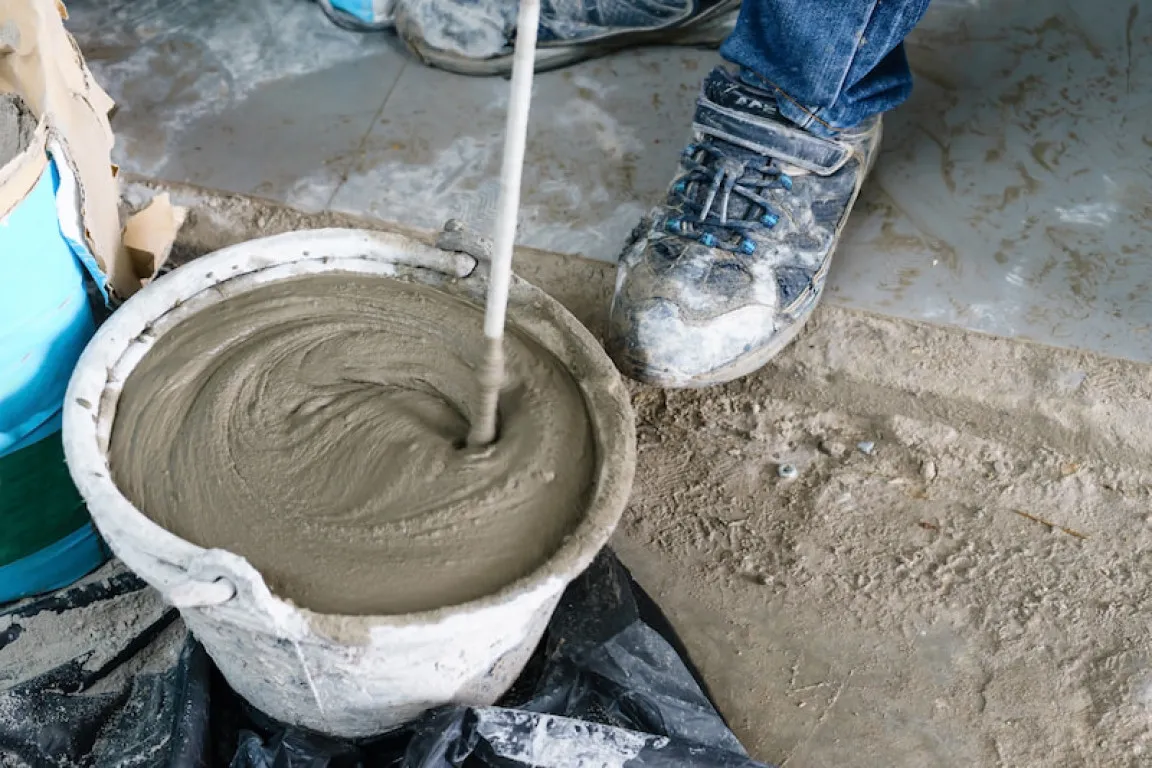There are several ways on how to lay a cement floor for a sturdy result. Generally, the ground area will be cemented first before installing building materials for the floor.
It takes some easy steps to lay a cement floor. But if you find it difficult or unfamiliar, this article will share the complete guide. Check this out!
How to Lay a Cement Floor
Cement flooring generally aims to increase the sturdiness of the floor surface and create a clean impression. Although the process isn’t that difficult, each step must be done correctly to get maximum results. Here are some tips on how to lay a cement floor that you need to take note:
1. Cleaning the Area
The first step is to clean the area that will be cemented. It should be noted that any contamination, such as stones and weeds, in the area will affect the quality of the concrete mix. Therefore, cleaning the area should be done in the first place.
Clean the area from weeds, rocks, and other foreign materials. This way, the concrete mix will adhere properly.
2. Measuring the Area
After cleaning the area, the next step on how to lay a cement floor is measuring the area. Keep in mind that cementing the ground floor cannot be done instantly, especially with human labor. Therefore, it's a good idea to make a 12 meter barrier in the area that will be cemented.
When cementing the ground floor, do it step by step following the barrier you made before. Additionally, you need to level the thickness to make sure the floor surface can be flat. You can use wooden stakes and threads as the barrier.
3. Layer the Ground Area
While it might be optional, layering the ground area is a useful method for optimal results when cementing the ground floor. Use sand or bricks as a layer before pouring cement as it could make the floor more sturdy. This method is also a go-to solution when cementing an uneven area.
Keep in mind that layering the ground floor incurs additional costs. On that note, plan thoroughly before deciding whether or not to use soil layering.
Read also: 3 Applications of Recycled Building Materials for Construction
4. Making Cement Mix
Pay attention to how you make cement mix as it would significantly affect the final results. Generally, the ratio of cement and sand is 1:4. Make sure the sand is free from any contamination, such as soil or gravel.
It is recommended to sieve the sand first. Also, pay attention to where you store the cement. Do not store cement in a damp place as it will reduce its quality. Instead, you can store the cement on a pallet or cardboard.
5. Cementing the Ground Floor
After done with the mix, proceed to cement the area. With the help of the sections created earlier, you can start the cementing process gradually.
Pour the cement mix and spread it evenly, ensuring it covers the entire section. For those unsure how to evenly lay a cement floor, you can use a cement spreader available at building supply stores or make a simple spreader on your own.
6. Finishing the Floor with Plaster or Tiles
The last step on how to lay a cement floor is finishing. Make sure the spread cement has dried completely. There are two finishing methods: using plaster or installing tiles.
For plaster finishing, you must plaster the floor first. Use a cement to sand ratio of 1:4 for plastering. Once the plaster is dry, apply a finishing layer made from white glue and water in a ratio of 1 kg of glue to 5 liters of water.
After applying the finishing layer, proceed with grinding. However, note that this can only be done after the finishing layer has dried, which typically takes about 3 days.
For tile finishing, prepare the tiles by soaking them in water. Use a cement to sand mix ratio of 1:6 for adhesion. Ensure the measurements match the tile dimensions for a neat installation. Wooden stakes and string can help mark the placement of the tiles. Once done, fill the tile joints with filler, available at building supply stores.
After 5-15 minutes, clean any joint residue on the tiles using a sponge and water. Be careful, as water from the sponge can weaken the adhesive if the joints are not fully dry.
Read also: 4 Tips for Choosing Interior for Walls Made of Cement
Tips for Choosing Cement
Besides following the steps above, pay attention to the quality of the cement used. Choosing poor-quality cement can result in a weak final floor. For those unsure how to choose high-quality cement, here are some tips:
- Check the packaging to ensure it is not damaged.
- Look at the color and texture; good cement is usually gray and dust-like.
- Avoid dark-colored cement as it indicates high MgO content, making it prone to cracking.
- Avoid clumped and hardened cement, which indicates it has been stored too long.
- Choose cement with the SNI logo for guaranteed quality.
Those are the steps and tips on how to lay a cement floor. The final result is significantly influenced by the cement used. Therefore, use guaranteed quality cement, such as Semen Merah Putih.
With 40 kg and 50 kg packaging, Semen Merah Putih meets the needs of the Indonesian market and complies with SNI 7064-2014 standards. For more information about Semen Merah Putih products, fill out our contact form. With Semen Merah Putih, your building will be stronger and more durable.
Read also: 3 Building Material Options for House Roofs




